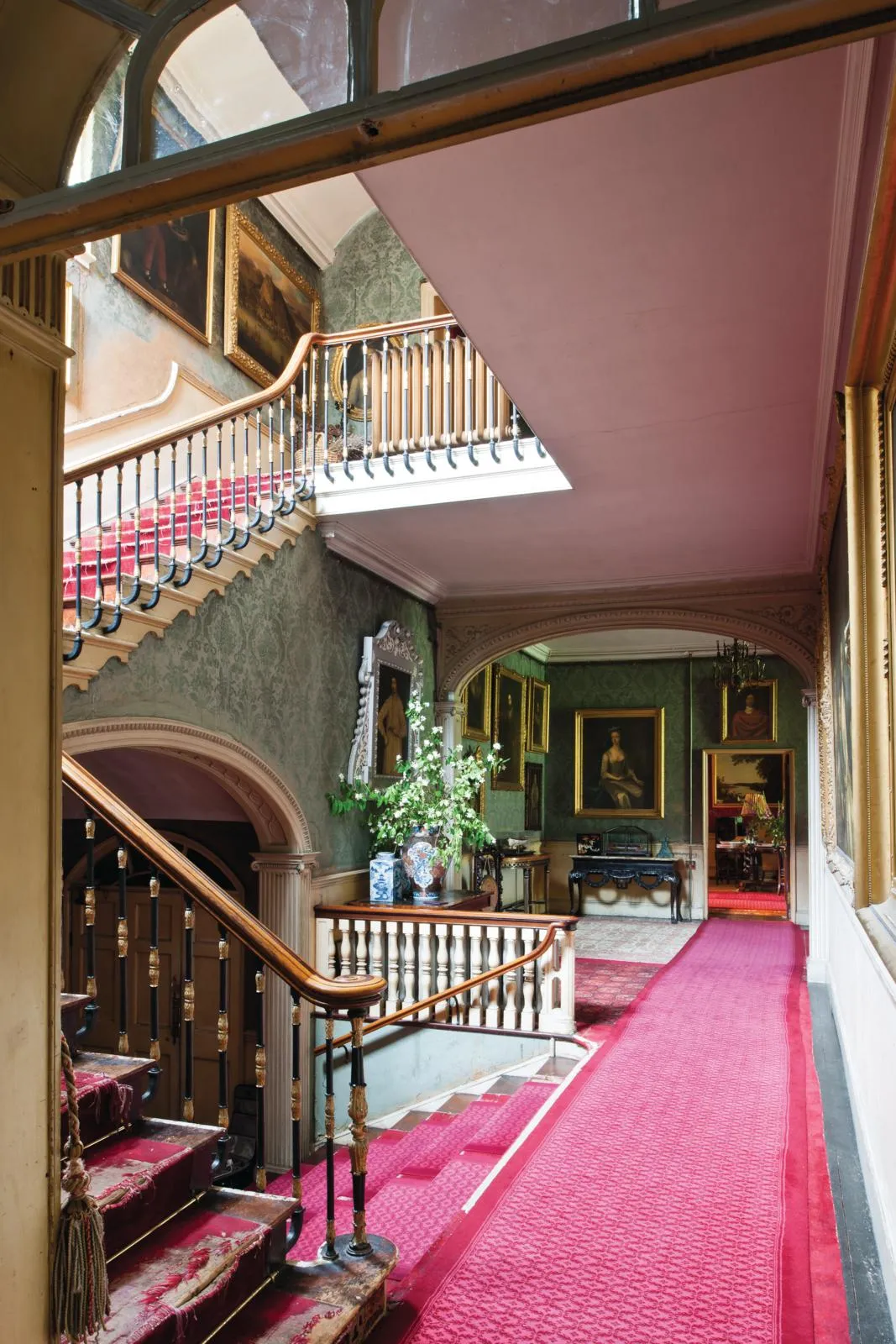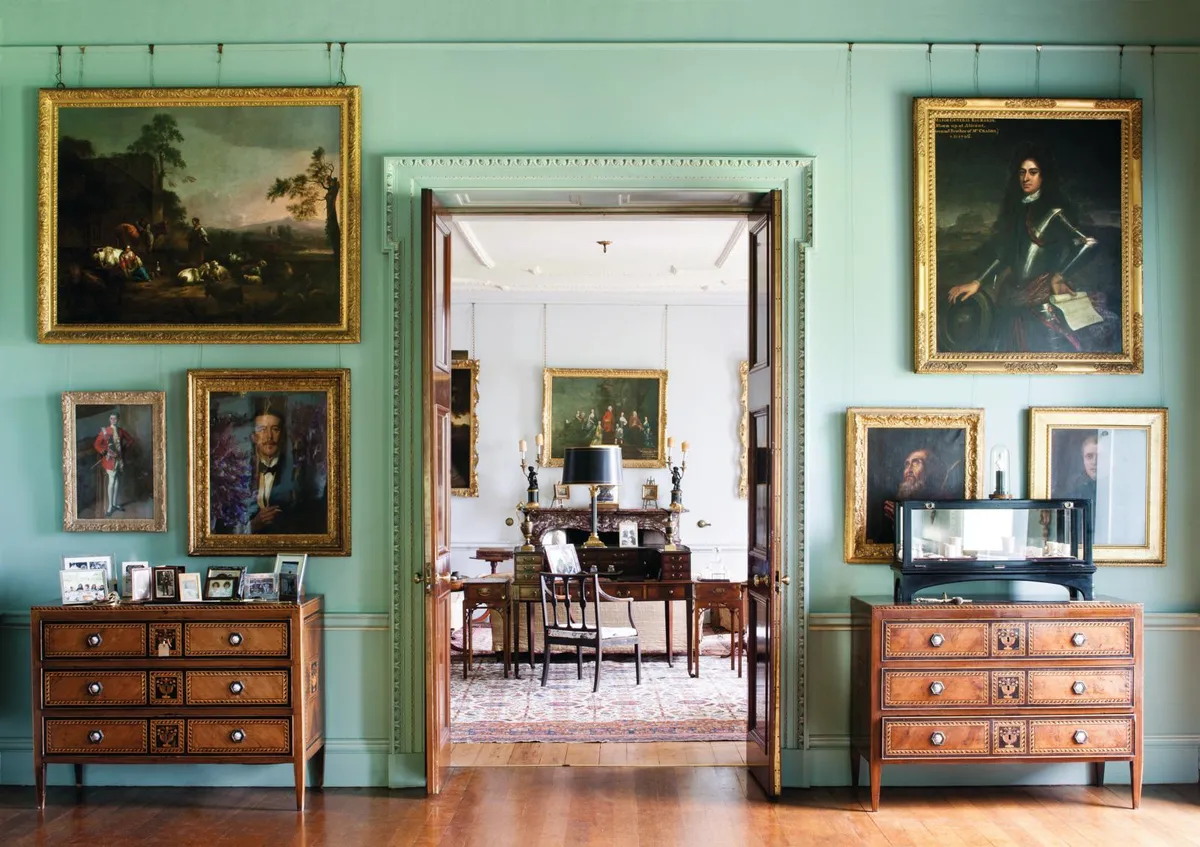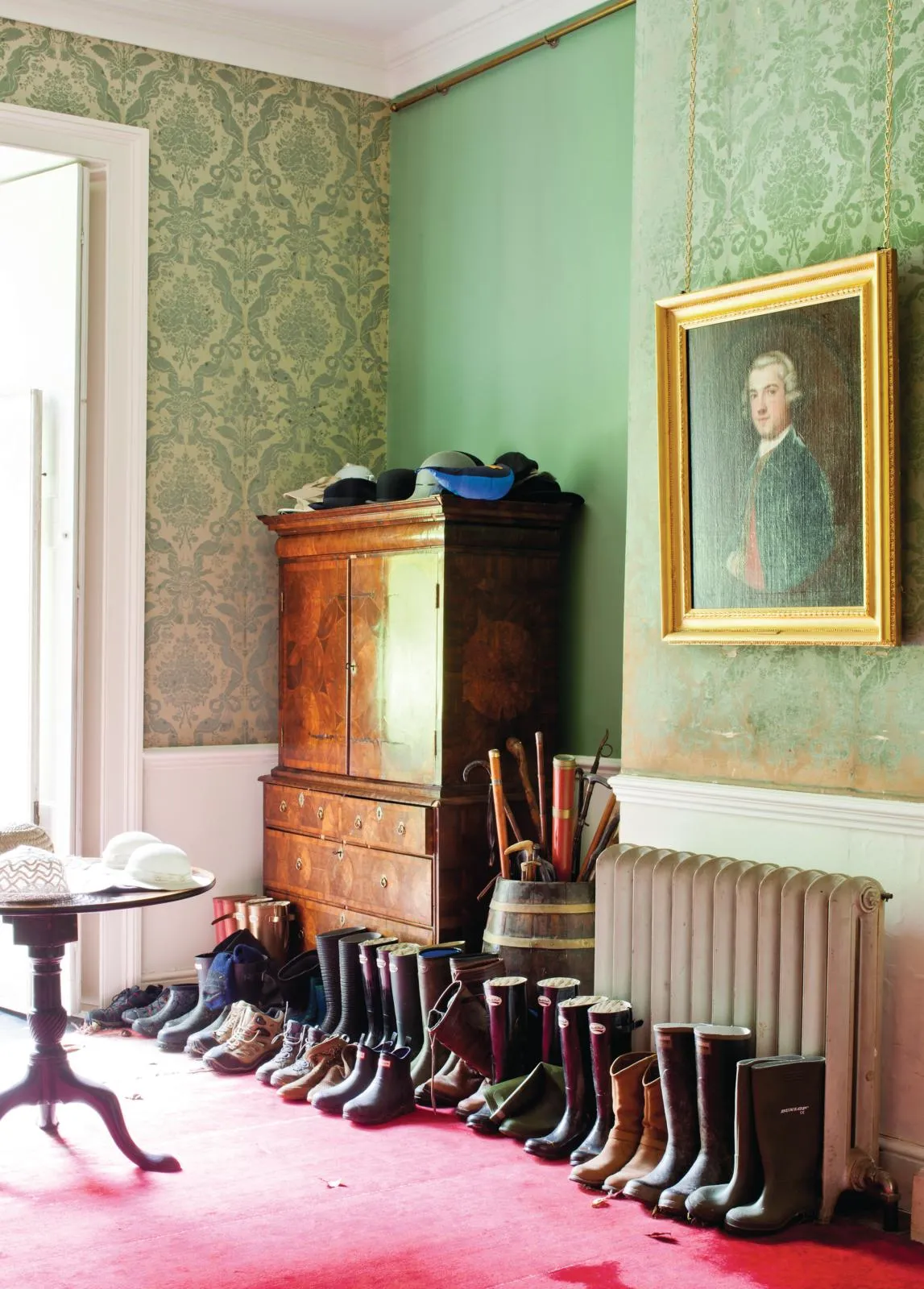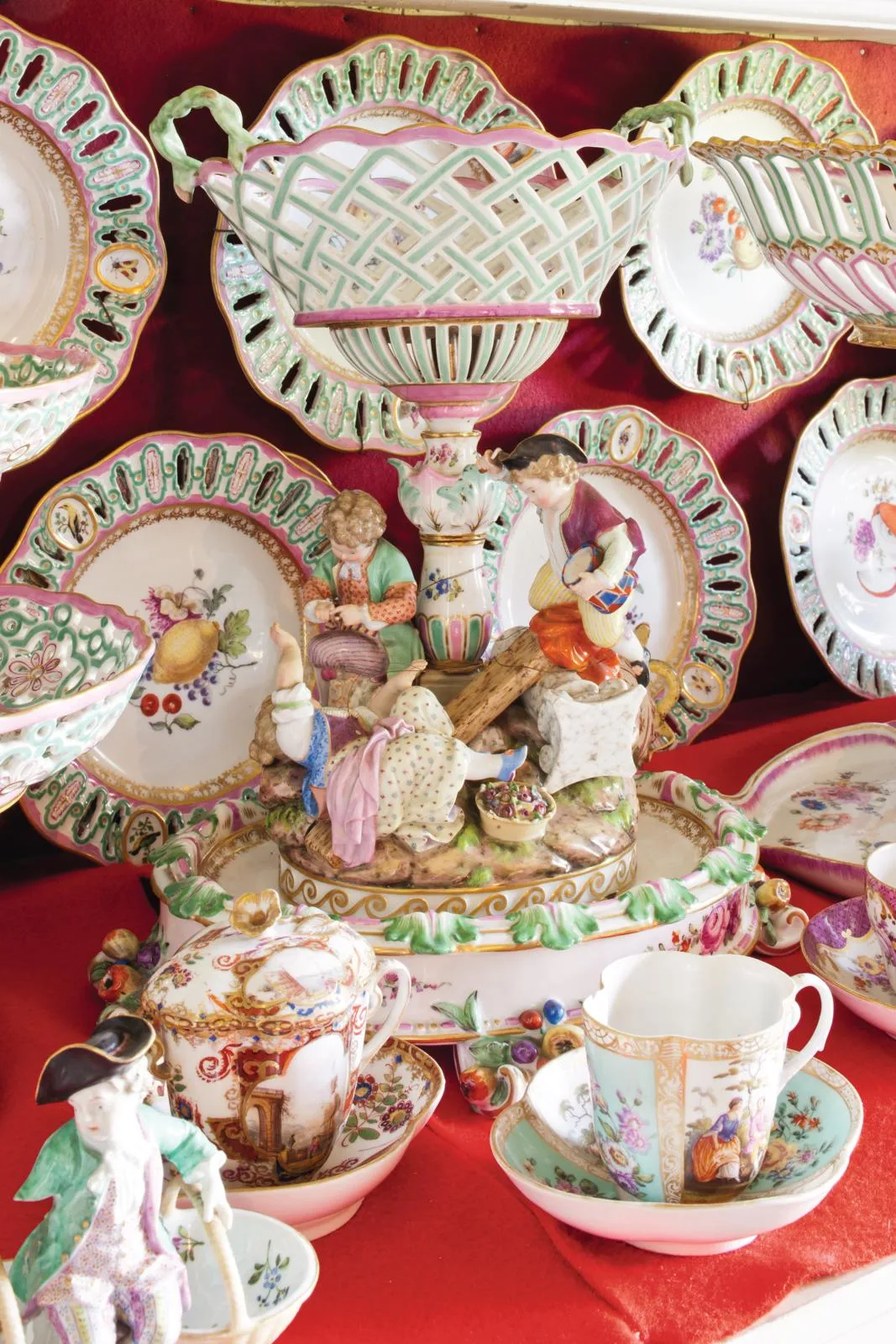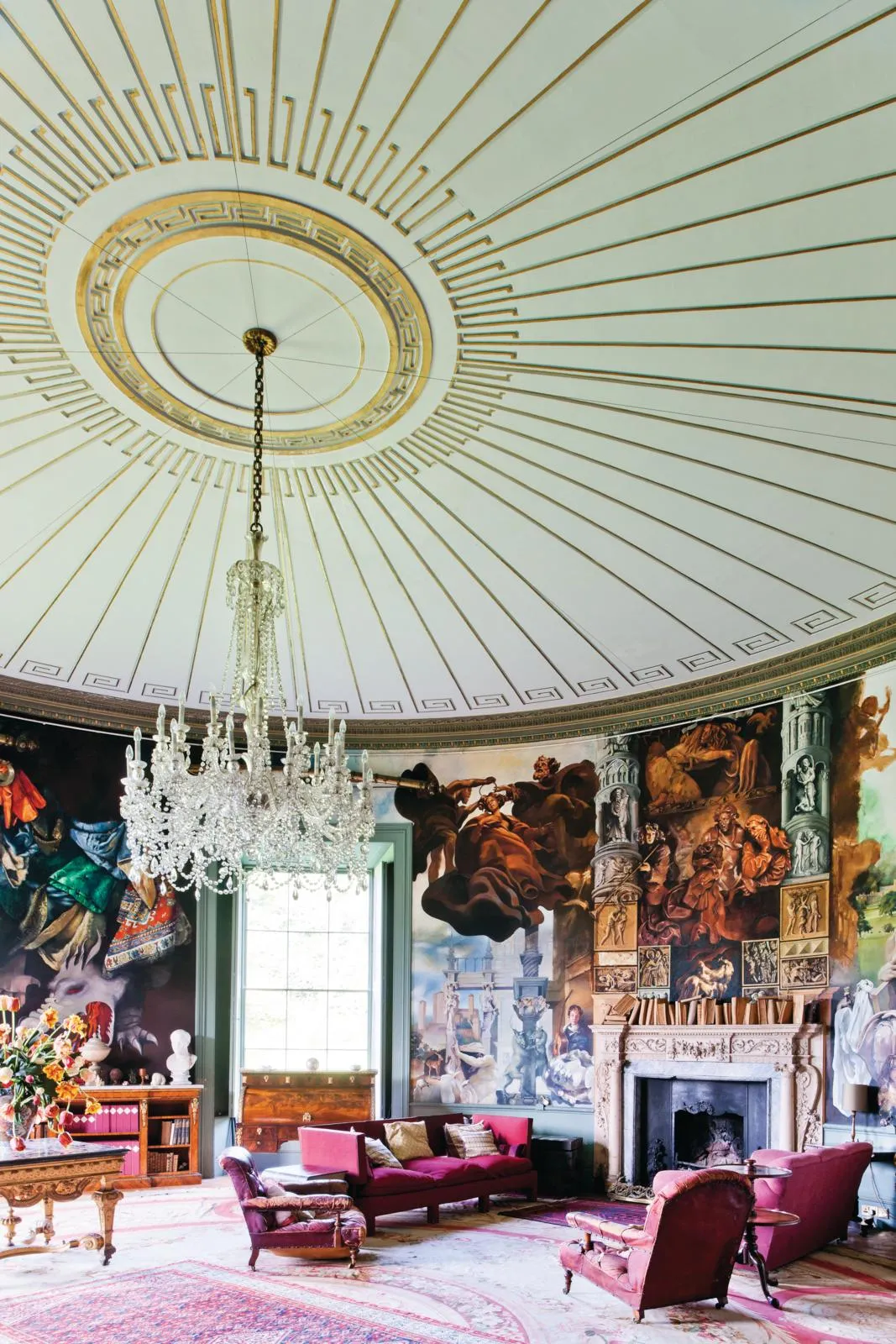Here and there damask wall hangings have faded to the mottled shades of setting plaster. Books are haphazardly piled beneath an exquisite 17th-century Dutch cabinet and rare Van Dyck portraits peep out from the mad encrustations on a neo-baroque frame.
Nearby, a couple of psychedelic surfboards are propped in a corner, and an extravagantly scaled flower and feather-garlanded chandelier, made by set designer Michael Howells, is suspended amid the classically restrained proportions of a room designed by Sir John Soane.
Such seemingly incongruous ingredients sum up the whacky appeal of Port Eliot: ‘It’s a family home, not a museum,’ says Ruth Goodland, Port Eliot’s guide, in explanation. ‘And the family still live here and love it as it is.’
She could add that what makes Port Eliot special is that it’s a house that has broadly escaped modernisation, where monastic remnants, Regency grandeur and a sprinkling of 21st-century arts comfortably coexist.
You might also like inside Burton Constable Hall
Under the same sprawling roof you’ll find traces of a floor that dates back to AD300, when Port Eliot was a thriving monastery. (The house thus lays claim to being England’s oldest inhabited building.)
Not far away there’s a controversial mural on the walls of a neoclassical interior designed by Sir John Soane. ‘Some people love it, but others think it’s dreadful,’ says Lucy Walker, events manager. Either way, it’s impossible not to be astonished.
In most practical senses, Port Eliot is out of sync with the modern world. There are 11 staircases, 82 chimneys and half an acre of roof. But there are only 11 radiators to heat the 124 rooms, and in them little has changed over the past two centuries.
The green wallpaper lining the Lobby was made in the 1800s using arsenic. ‘We were told by the late Earl that no one had ever died, but not to go licking it,’ says Ruth.
The medieval cellars were remodelled in the 19th century into an array of service rooms. Opening off a wide central corridor a Scullery, China Closet, Lamp Room, a Still Room and a Carpenter’s Closet remind you of the numerous staff who once lived and worked here.
In the main kitchen, which is still used by the Eliot family, the Esse oven dates back to c1900. The dishes in the porcelain cupboard are still used at dinner. ‘I wouldn’t dare to ask anyone to pass me the potatoes – the china is so valuable,’ says Lucy.
Threadbare carpets and frayed bed hangings apart, the powerful imprint of the Eliots, who moved in after the Dissolution of the Monasteries, and whose lives and loves shape every room, remains indelible. The word ‘democracy’ is said to have first been coined by Sir Thomas Elyot, a courtier amongst Henry VIII’s retinue, whose portrait hangs in the Lobby.
Of all the characters in this remarkable family, it’s hard to surpass Peregrine, 10th Earl of St Germans, who died aged 75 last year. ‘He was knowledgeable, hospitable and bohemian and loved the house,’ says Ruth.
You might also like explore Deans Court in Dorset
The 10th Earl was something of a Byronic rebel: he founded the Port Eliot festival, inviting stars of music, literature and food to perform. He also parked his Harley-Davidson in the Round Room, where he left his most dramatic mark.
Considered to be one of Sir John Soane’s masterpieces, the room served as a junk store until, in the 1980s, Peregrine commissioned the artist Robert Lenkiewicz to decorate it.
The mural was never finished and is not for the faint-hearted: portraits of family members, estate workers and friends feature alongside fantastical elements, such as Dando, a ghostly monk, who is said to haunt the grounds with a pack of hounds. The fireplace is decorated with wooden books carved from logs by Heathcote Williams.
Since Lord St Germans’ death the house has entered a pivotal new chapter. Albie, his grandson and successor, is only 12 years old, and the estate is run by trustees. ‘Albie loves the house and it’s great to think there’s a little chap coming on who cares,’ says Lucy.
Meanwhile, without compromising the late Earl’s wishes, tweaks are being made. A suite known as the Terrace Rooms have become guest accommodation. ‘The work started before Lord St Germans died. He was upset that the old wallpaper had to be stripped away, but he’s had the last laugh,’ says Lucy. ‘We found an incredible 18th-century Chinese-style mural behind it that we’re keeping.’
